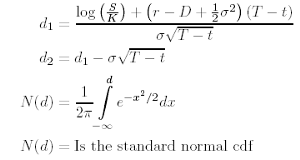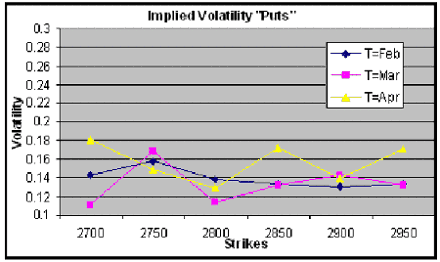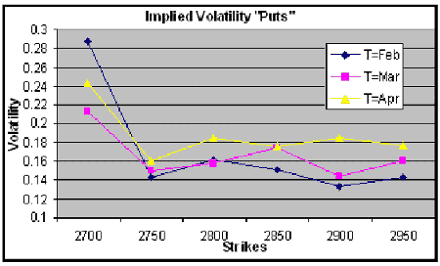The option pricing formula is derived from the assumption that the spot price ”S” follows a risk-neutral random walk of the form:

were ”r” is the risk free bank rate, ”D” the dividend and ”σ” the volatility for the stock price ”S”. Assuming that they are constant and applying Ito’s lemma to a free-risk portfolio Π we can yield the Black-Scholes-Merton PDE.

If the terminal condition is the payoff of the option

The explicit solution for V (S, T) is:

where

On the other hand, if we know the value of the options, we can calculate the volatility for these instruments using the explicit solution. So then, if we have

we can find a numerical method that solves the last equation to converge the unique implied volatility for this option price. (e.g. use the Newton- Raphson Method) If we compute the implied volatility for market data using the last example we would expect the same volatility for all strikes and maturities for options with the same underlying price. However, it is well known that this is not what is observed.

The “implied volatility” produced in this way varies both in time to expiry and in the strike (the volatility smile or skew).

Prof. Klaus Schmitz
Next: Local Volatility
Summary: Index